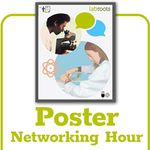Date: October 24, 2024
Time: 2:00pm CEST, 8:00am EDT, 7:00am CDT, 5:00am PDT
Urinalysis is a major diagnostic screening test in the clinical laboratory, with an important role in diagnosing and monitoring nephrological and urological conditions. Until recently, microscopic urine sediment analysis was the most widely accepted urinalysis methodology.1 However, this time-consuming methodology is associated with extensive analytical errors. Over the past 30 years, new automated technologies and informatics have greatly reduced the labour intensity of urinalysis and have created new technical possibilities.2 These novel technologies not only offer workload-savings, but show a lower interlaboratory variation and are less prone to inter-operator variation.2 Furthermore, diagnostic performance improved significantly by the implementation of expert review rules, based amongst others on the discordance of results between urine test strip and particle analysis.3-6
These technical and informatics evolution in urinalysis urged for a review of the European Federation of Clinical Chemistry and Laboratory Medicine (EFLM) European Urinalysis Guideline, already dating back to the year 2000.7 In the recently updated EFLM recommendations8, graded recommendations were built on the (i) medical needs of urine lab tests, (ii) specimen collection, (iii) biochemistry tests, (iv) particle analysis and (v) bacteriological examinations. Therefore, they serve as the current benchmark for quality and consistency in urinalysis and were developed to standardise and harmonise practices across the continent.9
This presentation will provide an overview of the recommendations on urine particle analysis as outlined in the guideline, thereby emphasizing the importance of standardisation of routine procedures for urine particle identification and quantification.
Learning objectives:
-
Differentiate between the basic and advanced levels of urine particle analysis.
-
Explain how to perform dysmorphic erythrocyte counts, which are important for distinguishing glomerular from non-glomerular bleeding
-
Describe how to evaluate the performance of automated urine particle analyzers.
References
- Hannemann-Pohl K, Kampf SC. Automation of urine sediment examination: a comparison of the Sysmex UF-100 automated flow cytometer with routine manual diagnosis (microscopy, test strips, and bacterial culture). Clin Chem Lab Med. 1999;37(7):753-764. doi: 10.1515/CCLM.1999.116
- Delanghe J. New screening diagnostic techniques in urinalysis. Acta Clin Belg. 2007;62(3):155-161 doi: 10.1179/acb.2007.026
- Langlois MR, Delanghe JR, Steyaert SR, Everaert KC, De Buyzere ML. Automated flow cytometry compared with an automated dipstick reader for urinalysis. Clin Chem. 1999;45(1):118-122. doi: 10.1093/clinchem/45.1.118
- Roggeman S, Zaman Z. Safely reducing manual urine microscopy analyses by combining urine flow cytometer and strip results. Am J Clin Pathol. 2001;116(6):872-878. doi: 10.1309/GRT7-Q6WP-VGWE-0YUM
- Oyaert M, De Bruyne S, Van Camp C, Van de Caveye I, Delanghe J. Lipid droplets may interfere with urinary red blood cell and crystal counts by urinary flow cytometry. Clin Chem Lab Med. 2023;62(3):e65-e67. doi: 10.1515/cclm-2023-0783
- Palmieri R, Falbo R, Cappellini F, Soldi C, Limonta G, Brambilla P. The development of autoverification rules applied to urinalysis performed on the AutionMAX-SediMAX platform. Clin Chim Acta. 2018;485:275-281. doi: 10.1016/j.cca.2018.07.001
- ECLM. European urinalysis guidelines. Scand J Clin Lab Invest. 2000;231:1–86. doi: 10.1016/S0009-8981(00)00256-4
- Kouri T, Hofmann W, Falbo R, et al. The EFLM European Urinalysis Guideline 2023, Clin Chem Lab Med. 2024;62(9):1653-1786. doi: 10.1515/cclm-2024-0070
Webinars will be available for unlimited on-demand viewing after live event.
Labroots is approved as a provider of continuing education programs in the clinical laboratory sciences by the ASCLS P.A.C.E. ® Program. By attending this webinar, you can earn 1 Continuing Education credit once you have viewed the webinar in its entirety.





